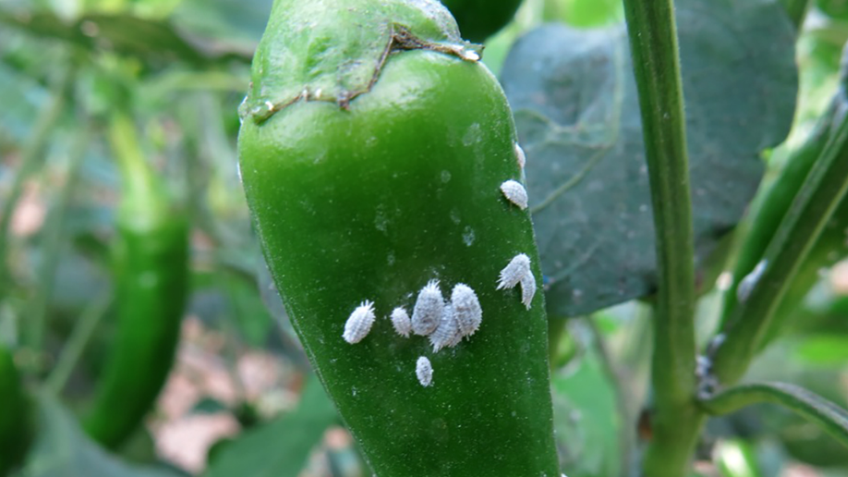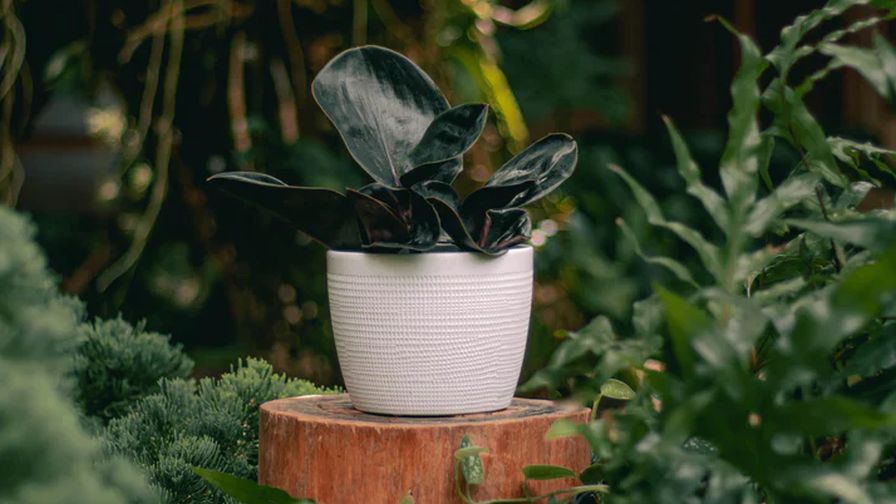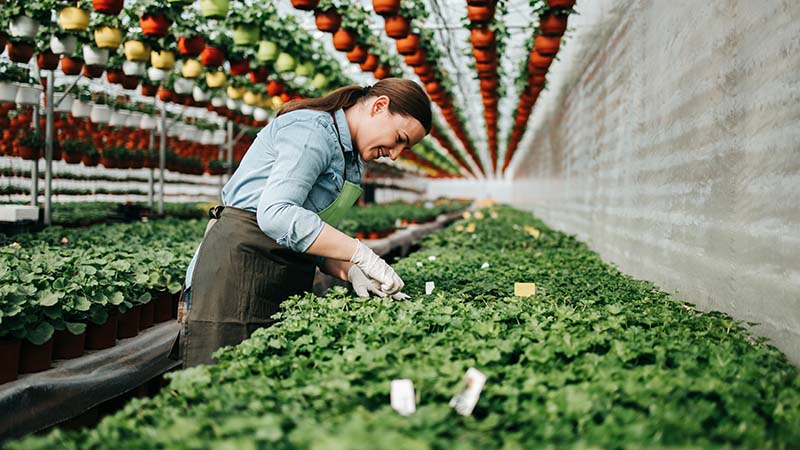Monitor for Mealybug in the Greenhouse With These Tips

Photo: Biobest Group
Mealybugs are widespread pests that affect mostly ornamentals, but can also cause problems in greenhouse-grown vegetables and berries. Biobest Group IPM & Pollination Specialist David Abeijon recently shared information on the signs and symptoms to look out for when scouting crops, why this pest is such a challenge to control, and biological solutions.
Together with the scale insects, mealybugs are members of the Coccoidea superfamily. Mealybugs can be vectors of viruses. They do have low mobility, which means that outbreaks of this pest depend largely on climatic conditions.
Mealybug damage can manifest itself in a variety of ways. Mealybugs cover the stems, the leaf, and flower buds with a white, woolly wax. Just like aphids, they have piercing mouth parts which allow them to suck the sap out of plants. The mealybugs then excrete any excess sugars in the form of honeydew. This makes the plant’s leaves, stems and fruit sticky. These surfaces then often become black due to the growth of sooty molds. This mold thrives on honeydew and has a negative impact on plant photosynthesis. Honeydew also attracts ants. Ants protect the mealybugs from their natural enemies, which sometimes hinders the effectiveness of biological crop protection products.
Mealybugs can reduce the aesthetic value of the plant, and in cases of a severe infestation, they can also affect the health and growth of the plant. Wilting may be just around the corner.
When scouting, it is important to pay attention to joints on the plant – such as axils and fruit calyx – as mealybug colonies tend to appear in parts serving as a comfortable refuge. Initially, the pest tends to be distributed throughout the tree or bush, before moving to young leaves or newly formed fruits. In some crops, such as blueberries, it may already be hidden inside the unopened buds.
It is important to note that female and male mealybugs look totally different. Females are oval shaped and are covered with a white waxy coat, giving them the appearance of being covered with a white powder. Some species can be identified by the patterns generated by the white coat. In contrast, males look like small flies with a single pair of white/translucent wings and a reddish/pink body. They are quite small in comparison to the females. Without mouthparts, males do not feed on plants, and they can be extremely difficult to observe in the crop.
For more information, including mealybug lifecycle and management solutions, continue reading here.









